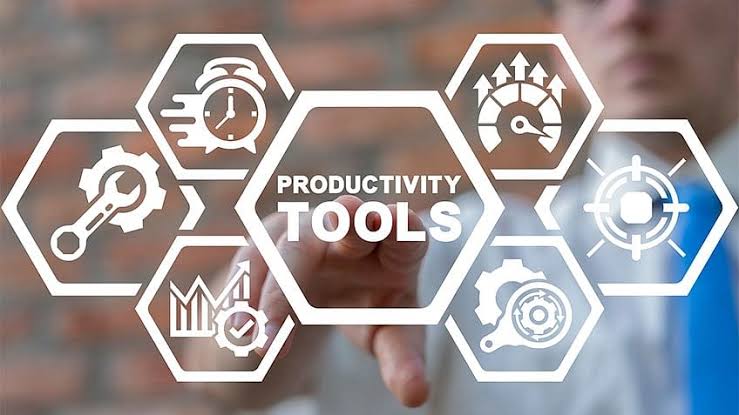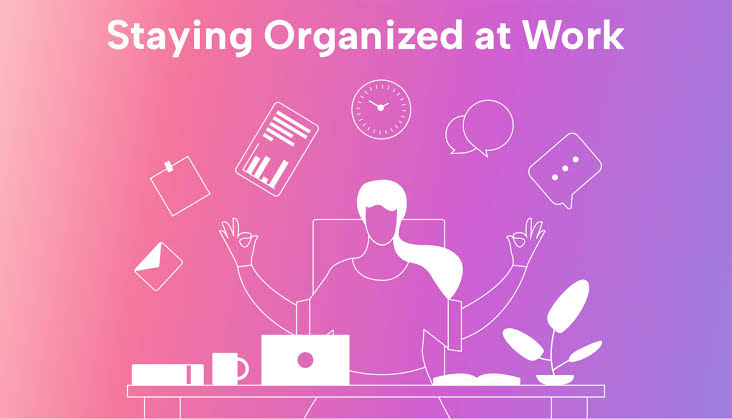Technology has completely redefined how we approach productivity in the workplace and in personal life. From cloud storage to AI-powered task management, digital tools are now deeply integrated into how we plan, prioritize, and execute tasks. In 2025, the conversation is no longer about whether technology helps productivity—but how best to use it.
In today’s hybrid and remote-first environments, individuals and organizations rely on tech tools not just to get work done, but to stay connected, automate tasks, analyze data, and optimize time. The key lies in choosing the right tools and using them effectively without getting overwhelmed by digital clutter.
Setting Clear Goals Before Choosing Tools
Before diving into specific tools or platforms, it’s essential to define what productivity means to you or your team. Are you trying to manage time better? Reduce distractions? Collaborate more efficiently? Automate routine work?
Setting clear goals allows you to choose technology intentionally instead of reacting to trends. For instance:
- If your goal is time management, focus on scheduling and time-tracking apps.
- If it’s team collaboration, prioritize communication and project tools.
- For workflow automation, look for integrations and no-code platforms.
Using tech without a clear purpose often leads to fragmentation, not productivity.
Task Management and Organization Tools
One of the core aspects of productivity is organizing and tracking your tasks effectively. Task management tools help you keep projects structured, set priorities, assign responsibilities, and monitor progress.
Popular platforms include:
- Trello – A visual board-based tool for organizing tasks in a drag-and-drop interface.
- Asana – Great for teams to track workflows, dependencies, and milestones.
- ClickUp – Offers a comprehensive suite combining docs, tasks, time tracking, and goals.
- Todoist – A simple yet powerful to-do list app for individuals and teams.
Using these tools helps prevent missed deadlines and improves accountability, especially when managing multiple projects at once.
Time Management and Focus Enhancers
Technology can just as easily become a distraction as it can a solution. To maximize your focus, there are several tools specifically designed to help you manage your time and limit interruptions.
Examples include:
- RescueTime – Analyzes how you spend time on digital devices and suggests improvements.
- Forest – Uses gamification to keep you off your phone and focused on tasks.
- Focus@Will – Provides productivity-enhancing music based on neuroscience.
- Pomofocus – A digital Pomodoro timer to break work into manageable sprints.
These tools not only help with focus but encourage mindfulness about how your time is spent, making you more intentional with your work hours.
Automating Repetitive Tasks
Automation is one of the most powerful ways to increase productivity in 2025. Repetitive or administrative tasks consume hours of valuable time. With tools that connect your apps and services, you can automate everything from email responses to file management.
Useful automation platforms:
- Zapier – Connects over 6,000 apps to automate workflows without coding.
- Make (formerly Integromat) – Visualizes more complex automations and integrations.
- IFTTT – Ideal for personal automation between social media, calendars, and devices.
Simple automations, like syncing your calendar with your task list or auto-saving email attachments to cloud storage, can save you several hours every week.
Enhancing Collaboration and Communication
Team productivity thrives on clear communication. With remote work on the rise, asynchronous and real-time communication tools have become critical. Fortunately, several platforms now make global collaboration seamless.
Recommended tools include:
- Slack – Central hub for team communication with channels, threads, and integrations.
- Microsoft Teams – Integrates meetings, chat, and Office tools in one platform.
- Zoom – Still dominant for virtual meetings, now with AI features and whiteboarding.
- Notion – Combines notes, wikis, databases, and calendars for collaborative workspaces.
The right communication tools reduce meetings, increase transparency, and keep everyone aligned.
Using Cloud Storage and File Management Tools
Access to the right files at the right time is non-negotiable in a productive workflow. Cloud-based platforms offer secure, centralized storage and make collaboration smoother.
Leading tools include:
- Google Drive – Enables document creation, sharing, and real-time editing.
- Dropbox – Known for its file syncing and backup features.
- OneDrive – Seamlessly integrated with Microsoft’s suite of tools.
- Box – Popular among enterprises for secure content management.
These platforms eliminate version confusion, allow remote access, and improve document workflow across devices.
Analytics and Performance Tracking
To optimize productivity, you need to measure it. Analytics tools provide insights into work patterns, task completion rates, and team performance. They help identify bottlenecks and areas for improvement.
Examples of productivity analytics tools:
- Toggl Track – Offers detailed time tracking reports for individuals or teams.
- Clockify – Tracks billable hours and project timelines with visual dashboards.
- Time Doctor – Provides productivity metrics and even website usage data.
- Google Workspace Analytics – Helps track how teams use documents and communication tools.
Data-driven decisions empower smarter planning and more accurate forecasting of project timelines.
Tips for Avoiding Tech Overload
While tools can dramatically boost productivity, too many apps or platforms can create the opposite effect: tech fatigue. Here are simple ways to avoid digital clutter:
- Audit your tools monthly – Remove apps you no longer use or need.
- Centralize your workflow – Choose tools that integrate well with each other.
- Limit notifications – Turn off non-essential alerts to protect your focus.
- Use dashboards – Tools like Notion or ClickUp can act as a central hub for all your tasks and projects.
Productivity should never be buried under layers of apps. Streamline your toolkit for clarity and ease of use.
Conclusion
Technology, when used with intention, is one of the most powerful allies in maximizing productivity. From organizing your daily schedule and automating routine tasks to enhancing focus and facilitating team collaboration, digital tools empower professionals to work smarter, not harder.
But the real magic lies in combining the right tools with clear goals, disciplined habits, and consistent review. In a world that moves fast and demands even faster responses, mastering your tech stack gives you a distinct advantage—saving time, boosting output, and bringing more clarity to your workday.



